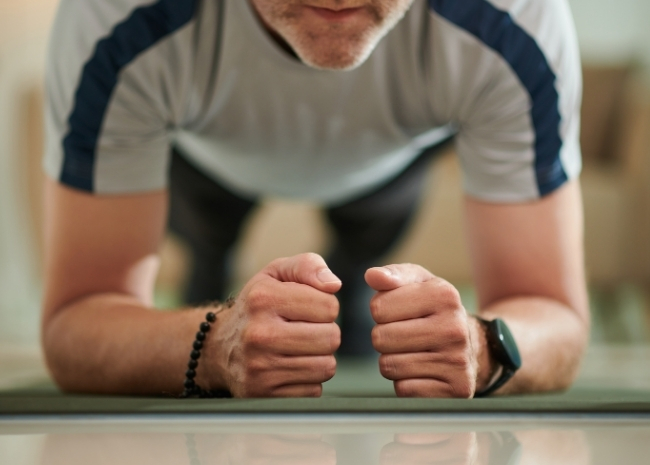
The Power of Isometric Muscle Actions in Rehab: A Guide for Physical Therapists
Why Isometrics Matter in Modern Physical Therapy
Isometric exercises have become a foundational component of contemporary rehabilitation programs. Whether you’re working with acute injuries, chronic conditions, or high-level athletes, isometrics offer an adaptable way to improve strength, control, and joint stability without requiring joint movement.
Both pushing and holding isometric actions offer unique advantages in rehabilitation. Clinicians are now using these approaches not just to maintain muscle activity during immobilization, but to strategically rebuild function, restore joint integrity, and address neuromuscular deficits with precision.
Applying Isometric Techniques in Clinical Practice
In practice, pushing isometrics (PIMA) are used to build force output and muscular endurance, while holding isometrics (HIMA) are used to challenge motor control, joint stability, and proprioceptive capacity.
Both techniques are valuable across the rehab continuum, from early-stage recovery through return-to-sport training.
Isometric training is also associated with lower joint stress, making it an ideal intervention for managing pain, inflammation, and tissue healing without compromising strength or function. It allows for safe and controlled dosing, enabling therapists to fine-tune stimulus levels for various populations.
Practical Clinical Applications
1) Early-Stage Rehab and Pain Management
PIMA is especially useful in early rehab when joint motion is contraindicated or painful. It can prevent disuse atrophy, maintain neuromuscular connections, and gently activate muscle groups without compromising healing structures.
Example:
- Supine quad set with towel roll under knee
- Seated knee extension against immovable resistance
- Isometric glute squeezes or core bracing in supine
These drills help re-establish voluntary activation and provide a controlled entry point into more dynamic loading.
2) Building Strength and Capacity
As a patient progresses, isometric strength training can provide targeted overload without the need for full range of motion. PIMA drills can be positioned at joint angles relevant to functional goals, and load can be increased gradually over time.
Example:
- Wall sits or Spanish squats for knee and hip extensors
- Isometric calf raise holds for Achilles or plantar fascia rehab
- Mid-range biceps curls with hold at 90 degrees
Therapists can use longer contraction durations (15–45 seconds) or repeated efforts to increase time under tension and promote hypertrophy.
3) Enhancing Joint Stability and Control
HIMA is highly effective in training joint integrity and postural control under load. It mimics the demands of real-life situations where patients must resist external forces and maintain joint alignment.
Example:
- Shoulder rhythmic stabilization with therapist-provided taps
- Core holds with perturbation from resistance bands
- Single-leg stance with manual resistance applied to pelvis
These exercises activate stabilizers and reactive muscle chains, training the body to remain resilient during sudden or unexpected movements.
4) Neuromuscular Reeducation and Postural Control
Patients with impaired proprioception, balance issues, or coordination deficits benefit from HIMA-based interventions. These drills improve motor planning and neural responsiveness.
Example:
- Pallof press variations in tall kneeling or split stance
- Static lunge with arm reach and trunk rotation
- Supine marching holds for lumbopelvic control
These can be integrated into functional movement patterns to bridge the gap between isolated muscle activation and dynamic task execution.
5) Advanced Applications: Return to Sport and Performance Rehab
For athletes or active populations, isometrics provide a high-intensity stimulus that supports tendon remodeling, force transfer, and reactive strength without excessive joint loading.
Example:
- Isometric mid-thigh pull for posterior chain activation
- Split squat iso-holds with overhead reach for full-body integration
- Manual resistance planks or side planks with perturbations
Combining PIMA and HIMA strategies allows for specificity, overload, and motor control refinement—essential for sport-specific preparation and injury prevention.
Programming Guidelines
- Dosage: Start with 3–5 sets of 10–30 seconds. Adjust based on fatigue, quality of movement, and pain levels.
- Load: Begin at low to moderate effort (30–60% MVC), progressing to higher intensities based on tolerance and goal.
- Progression: Increase duration, add external resistance, vary limb position, or introduce instability/perturbation.
- Recovery: Incorporate rest periods between efforts (30–60 sec) and monitor for delayed soreness, especially with high-effort HIMA.
- Integration: Combine with dynamic strengthening, mobility work, or functional drills to support carryover.
Example: Post-ACL Reconstruction Rehab Protocol
Weeks 2–4 (Early Phase)
- Seated quad sets, heel pushdowns, glute bridges with isometric hold
- Emphasis on mid-range contraction, light intensity
Weeks 4–8 (Intermediate Phase)
- Leg press iso-holds, wall sits, single-leg balance with reach
- Begin integrating HIMA drills with gentle perturbations
Weeks 8+ (Advanced Phase)
- Split squat holds, lateral step-down with pause, band-resisted core holds
- Combine PIMA and HIMA with dynamic movements to simulate sport conditions
Summary for Clinical Implementation
- Use PIMA to promote safe muscle activation, build force capacity, and reduce joint strain
- Apply HIMA to enhance joint control, improve reactive stability, and develop neuromuscular precision
- Integrate both in a progressive, individualized manner based on the stage of rehab and patient goals
- Use isometric drills as stand-alone exercises or seamlessly blend them into broader movement patterns
Isometric training is an evidence-based, low-risk, and highly effective method for strengthening, stabilizing, and retraining the neuromuscular system. With strategic programming, physical therapists can harness its full potential across the entire spectrum of patient care.
Cited Source: Schoen et al. (2024). “‘Pushing’ versus ‘Holding’ isometric muscle actions; what we know and where to go: A scoping and systematic review with meta‑analyses.” medRxiv.
——
Did you find these tips helpful? Let us know! Contact our PT Success Team at ptlighthouse@thejacksonclinics.com
To learn more about The Jackson Clinics and to explore a career with us, please visit thejacksonclinics.com/careers

















